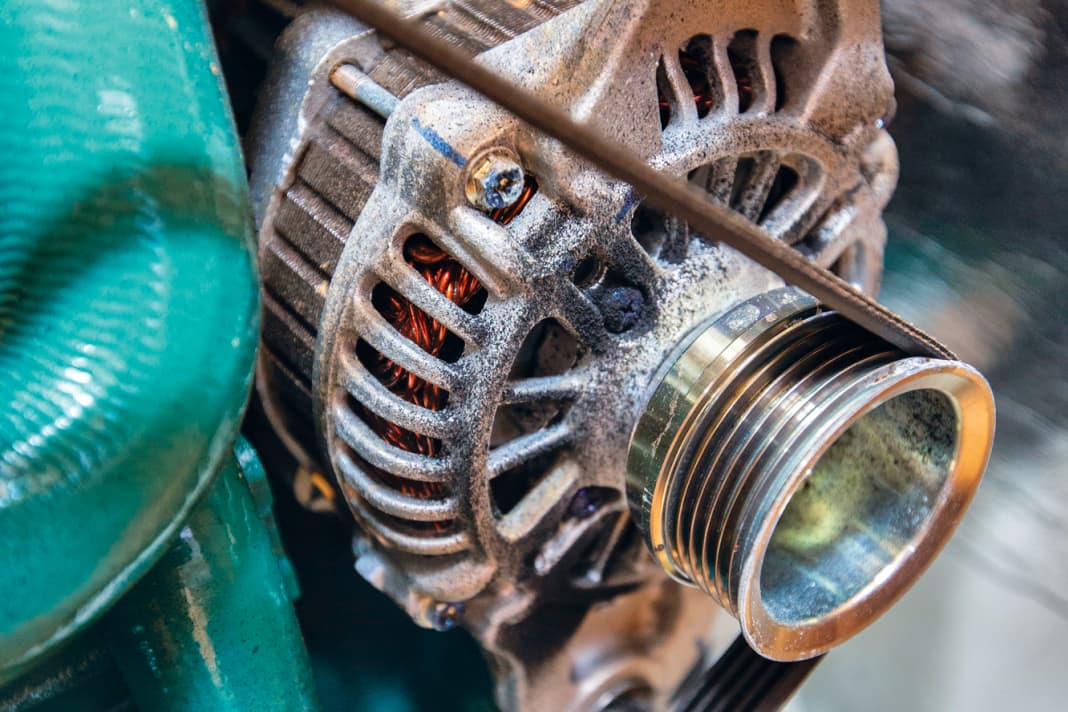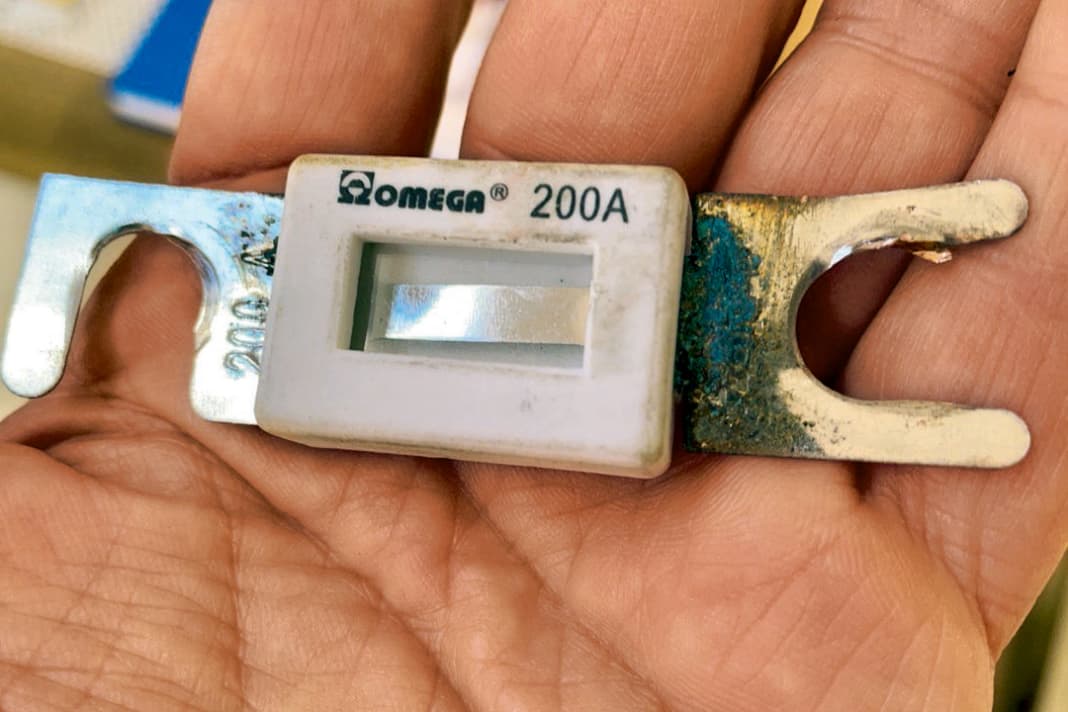





- Differences when charging LiFePO4 batteries or lead cells
- How well does the combination of lead-acid charger and lithium battery work?
- Connect lead starter battery directly to alternator
- Use of a charging booster saves the purchase of a lithium-capable shore power charger
- Why reduce the charging power?
- What should be considered during the conversion
- Secure installation
Lead-acid battery out, lithium in and that's it - many manufacturers of energy storage systems with integrated BMS advertise this approach. If you pay attention to a few things, you can actually get a functioning system. At least the battery supplies power and is also recharged. But it is not ideal. This is because LiFePO4 batteries behave very differently to lead cells when charging.
Differences when charging LiFePO4 batteries or lead cells
For example, there must be no trickle charging; the power supply must be terminated definitively when full status is reached. Actually. This is because there are now lithium batteries whose built-in electronics adapt the charging process themselves. This feature is then explicitly labelled.
But even then there can be problems. For example, some lead-acid chargers have automatic desulphation programmes, which means that they fire the battery with up to 15 volts at regular intervals. In this case, the BMS switches off and the battery is not charged at all. Manufacturers are of course aware of this, which is why they usually use the following wording: "Charging with an AGM characteristic is possible, but a LiFe charging programme is recommended."
How well does the combination of lead-acid charger and lithium battery work?
How well the combination of lead-acid charger and lithium battery works depends on the individual charger and the specifications of the BMS. As a rule of thumb: If the charger can be set to gel or AGM batteries with a final charging voltage of 14.4 volts, it can work.
The situation is similar with the alternator. This usually works with a so-called W characteristic curve, i.e. it supplies a fixed voltage and leaves the current regulation to the battery. With lead technology, this leads to very slow charging, as the current drops quickly due to the internal resistance and the voltage is selected so that the battery does not discharge too quickly.
A lithium storage system, on the other hand, accepts practically all the current that the alternator can supply, right up to the end of the charging process. This places enormous demands on the alternator and can lead to temperature problems and high V-belt wear. So here too, direct replacement is possible, but not ideal.
Connect lead starter battery directly to alternator
The good news is that you can kill both birds with one stone with a battery-to-battery charger, known as a B2B charger or charging booster, with a lithium characteristic curve. This involves connecting the lead starter battery directly to the alternator, as intended by the engine manufacturer, without isolating diodes or relays.
The B2B charger is connected in parallel to the starter battery. Its electronics recognise whether it is sufficiently charged and whether charging current is available; only then does the integrated voltage converter go into operation and provide the supply battery with the optimum charging voltage for it. In order to get a lot of current from the alternator despite the standard regulator, the B2B charger causes its voltage to drop significantly, but at around 13.0 volts it still remains above the starter battery's open-circuit voltage - so it is not stressed.
Use of a charging booster saves the purchase of a lithium-capable shore power charger
The system remains inactive when the machine is stationary or the starter battery is empty. The highlight here is that, as the B2B charger does not care who generates the electricity, it can also make a lead-acid charger or wind generator lithium-compatible. These power sources simply need to be connected to the starter battery.
Using a charge booster therefore saves you having to purchase a lithium-capable shore power charger. The only catch is that the dimensions of the B2B charger determine how much current flows into the battery, regardless of whether the alternator or 230-volt charger is active. If you choose a small version to protect the alternator from temperature collapse, you also limit the possibility of faster charging via the shore power cable, which is usually not necessary.
More articles on this topic:
Why reduce the charging power?
It may sound paradoxical to deliberately reduce the charging power of the alternator; after all, quickly topping up consumer batteries is at the top of many sailors' wish lists. In practice, however, the necessary charging times are significantly shorter than with a lead-acid system without regulation, even with limited current. Lead-acid batteries should be kept between 75 and 100 per cent charge for a long service life. It is precisely in this range that lead systems can hardly be charged at any appreciable speed.
In contrast, the state of charge of the lithium storage battery is relatively unimportant, it practically always absorbs the full current and even ages more slowly when partially charged than when it is completely full. B2B chargers are available from various manufacturers for charging currents between 20 and 200 amps; the latest generations from Mastervolt, Sterling Power and Victron are so efficient that they even manage without cooling fans.
What should be considered during the conversion
Speaking of electricity: When converting to lithium batteries, the entire electrical installation should always be inspected. Are the cable cross-sections between the battery and charger or B2B charger up to the expected loads, is there a fuse directly on the battery? The current limitation of the BMS only protects the storage system, not the cables. Particular attention should be paid to all connections.
Secure installation




Attention, resistance: Open cable connections are often still found in older installations with lead-acid batteries, but are not state of the art: Oxidation leads to increased contact resistance and quickly causes problems at higher currents. In addition, there is no fuse protection for consumers and test leads. Corrosion and poor contact can also become a problem with fuses.

